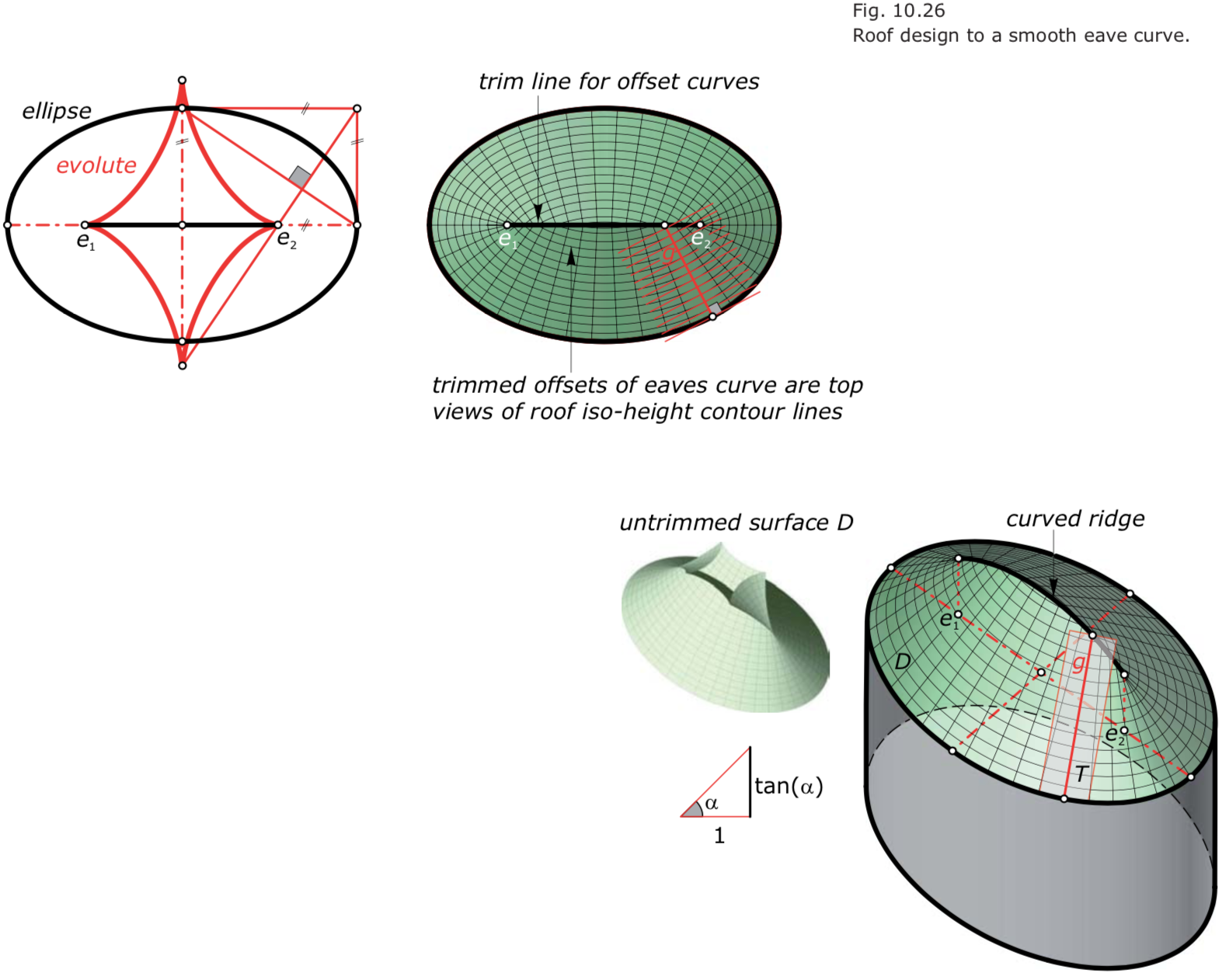Offsets
From the geometric point of view, a surface has no thickness. However, in architecture one often builds with shells. Thus, we need to give our surface model a certain thickness to make it more realistic. 几何角度曲面没有厚度,为了实现出来,需要增加厚度,则需要考虑等距面。

Offsets curves 等距线
- An offset has the same curve normals as the original curve, and thus the corresponding tangents of c and cd in corresponding points are parallel.
- Offset curves are sometimes referred to as parallel curves.
- Offsets can be obtained as envelopes of circles with radius d centered at the curve c.
Computing offset curves.
c(t) = (x(t), y(t)),n(t)= (−y'(t),x'(t))/ (x'(t)^2 + y'(t)^2)^{1/2},c_d(t) = c(t) ± d⋅n(t).
Curve, offset, and evolute.
- The normals of $c$ and $c_d$ are the tangents of the evolute $e$.
- At a cusp, the offset curve meets the evolute orthogonally.
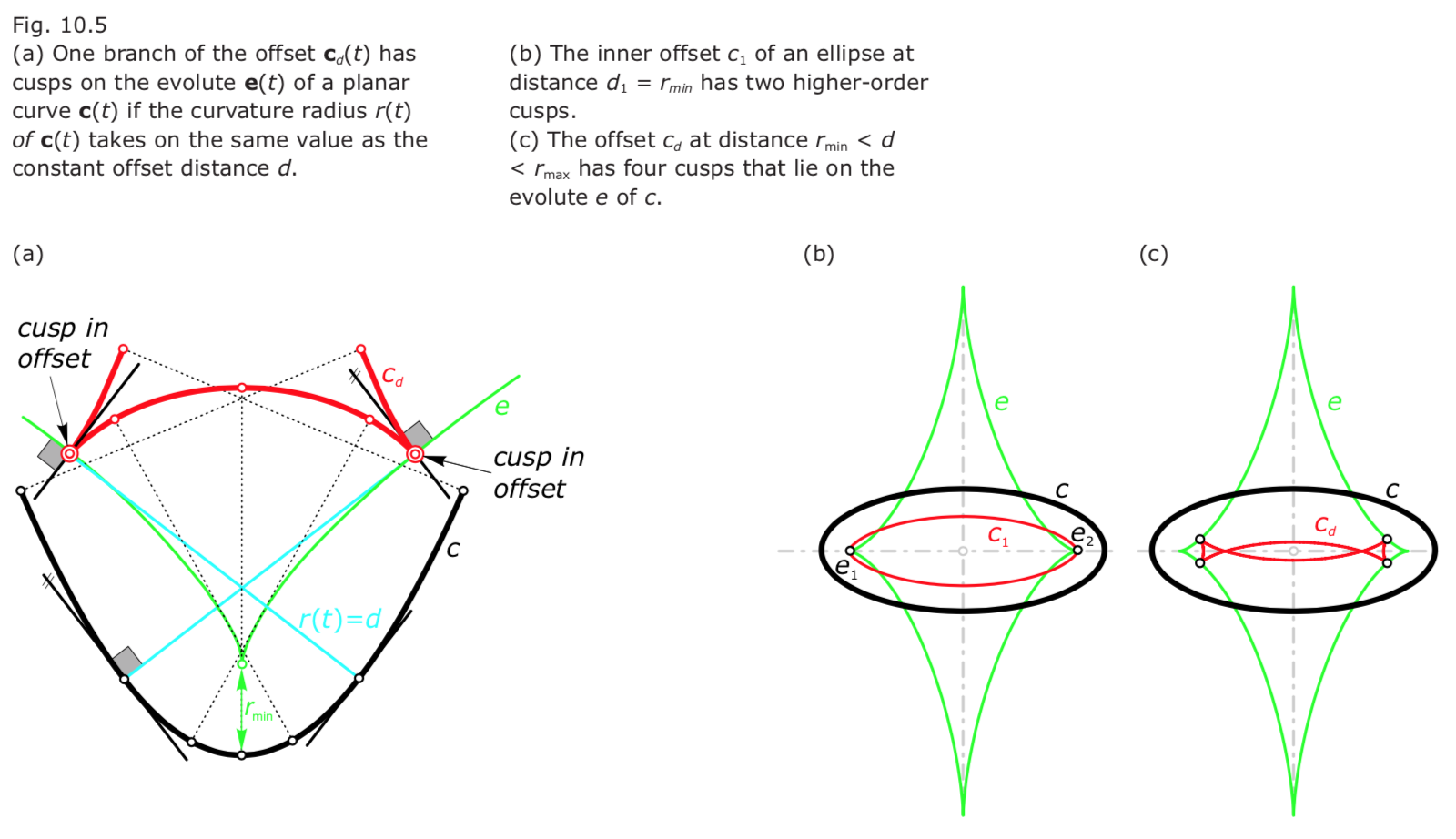
Offsets of planar polygons.
- Thus, one branch of the offset $p_d$ at constant distance $d$ consists of line segments (corresponding to the edges of p) and circular arcs (corresponding to the vertices of $p$).
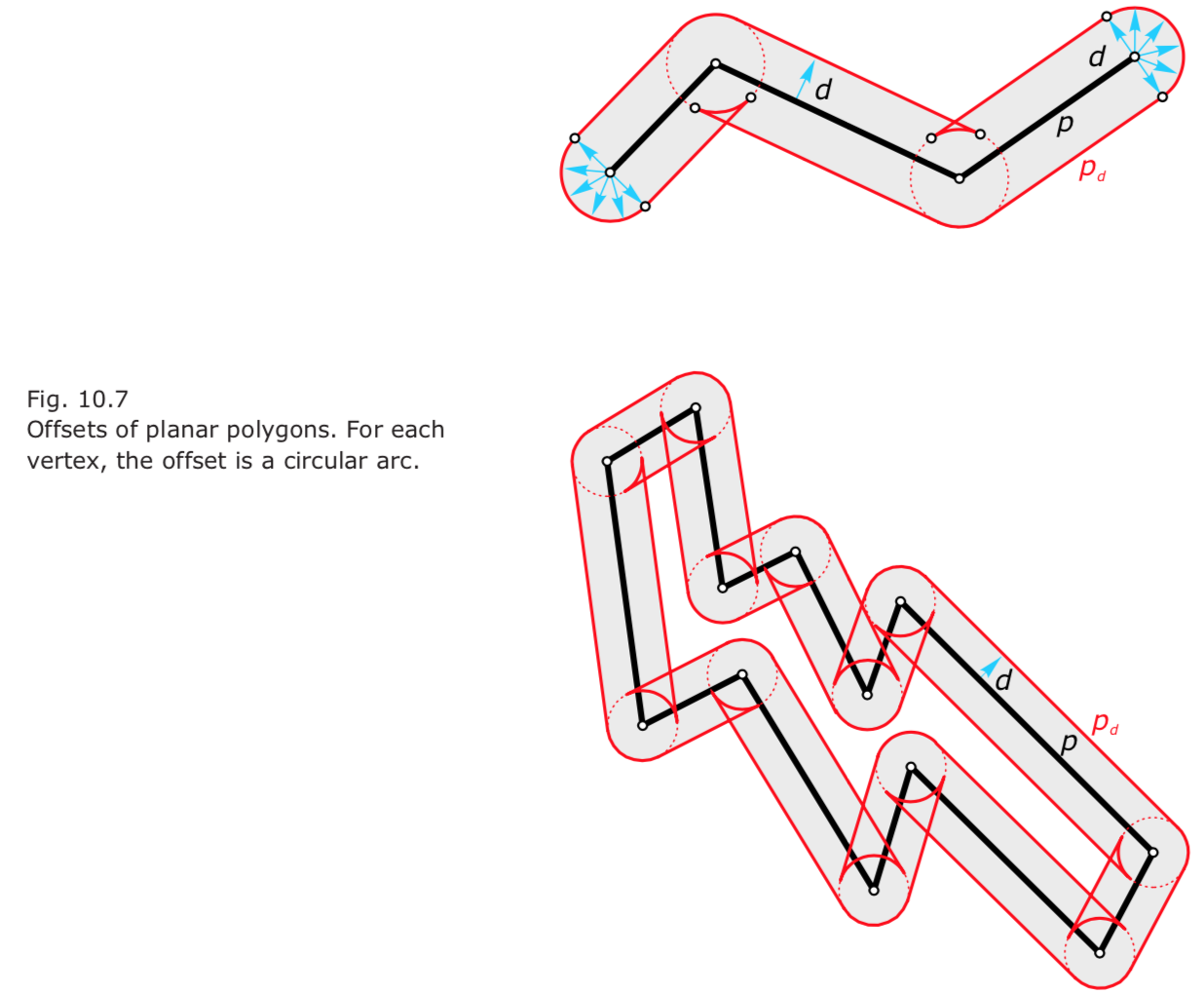
Offsets surfaces 等距面
S(u,v) = (x(u,v), y(u,v), z(u,v))S_d(u,v) = S(u,v) ± d · n(u,v).- Only special surface classes have the property that their offsets are again of the same surface type. These include cylinders and rotational surfaces.
- The offsets of the sphere are again spheres, and thus the offsets of a torus are again tori with the same axis and the same middle circle.
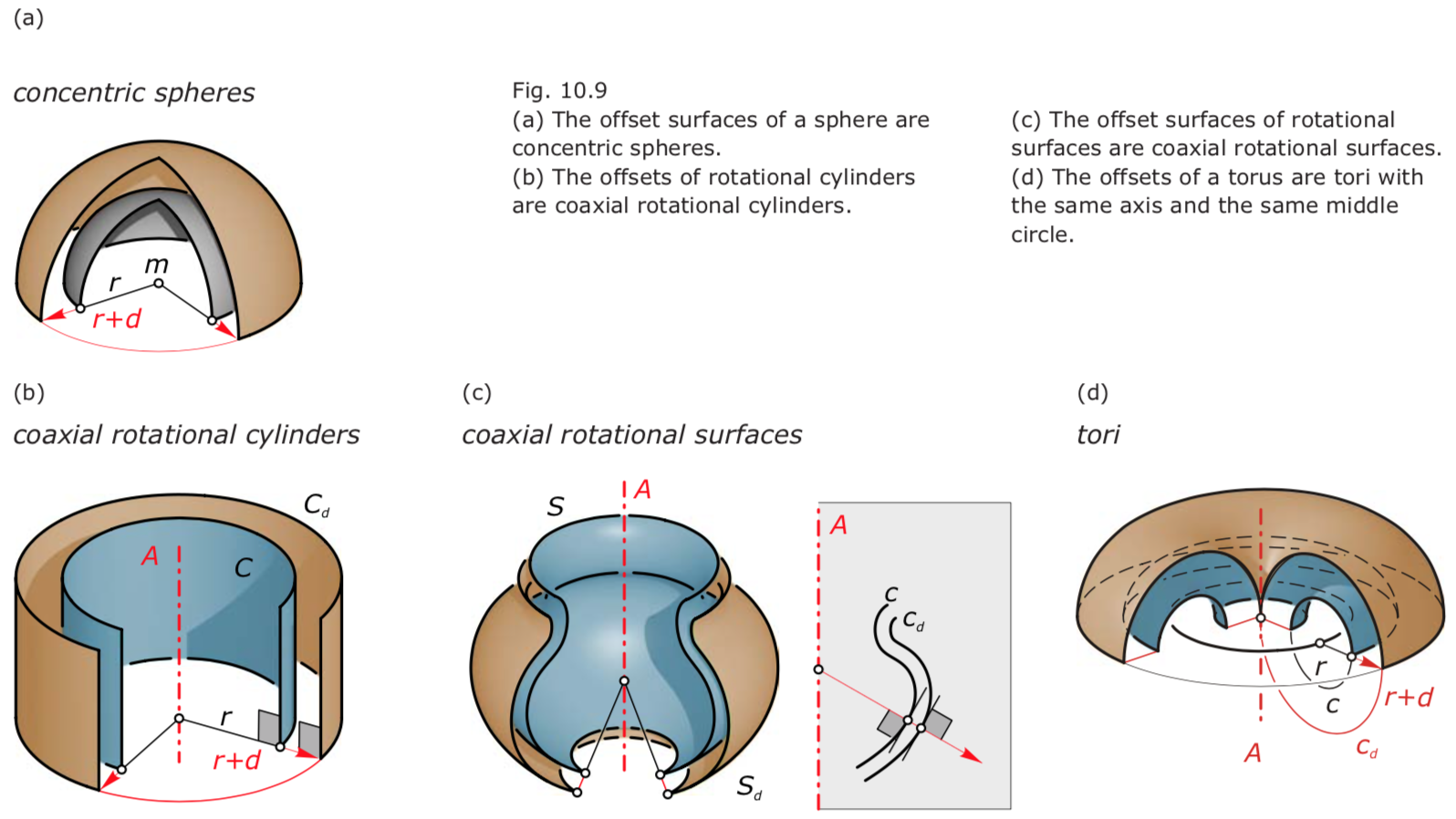
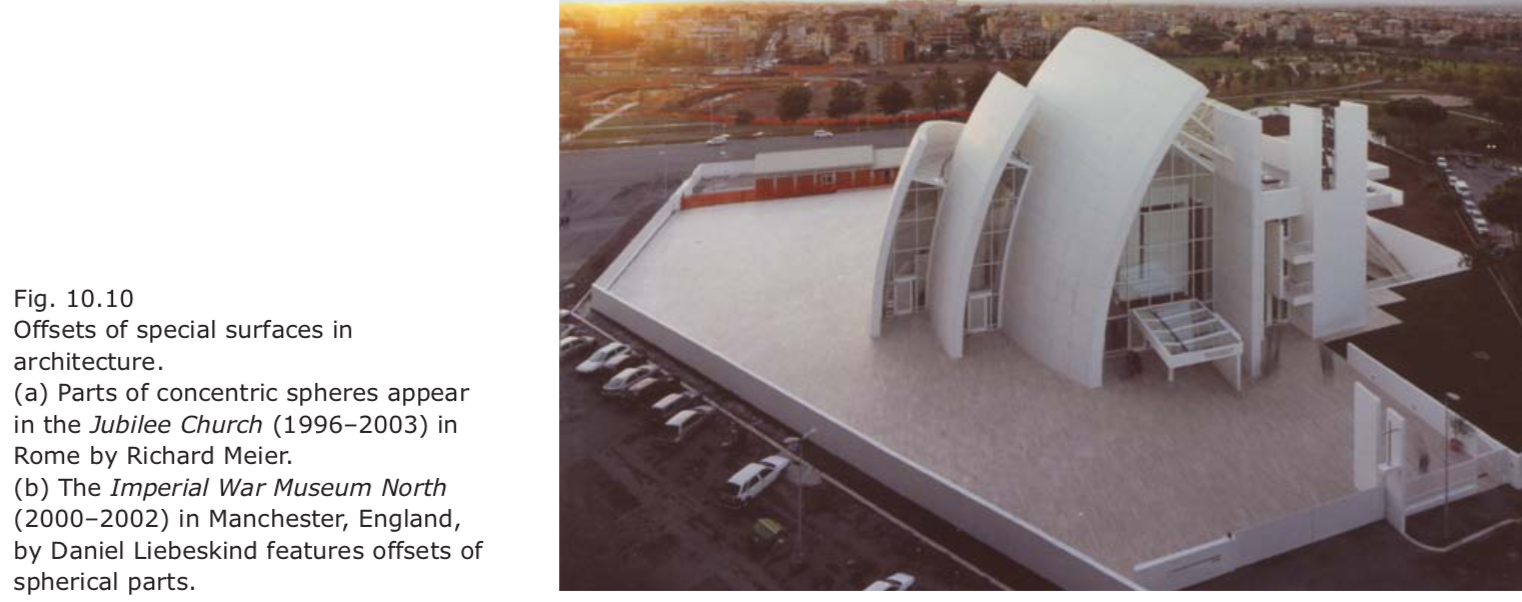
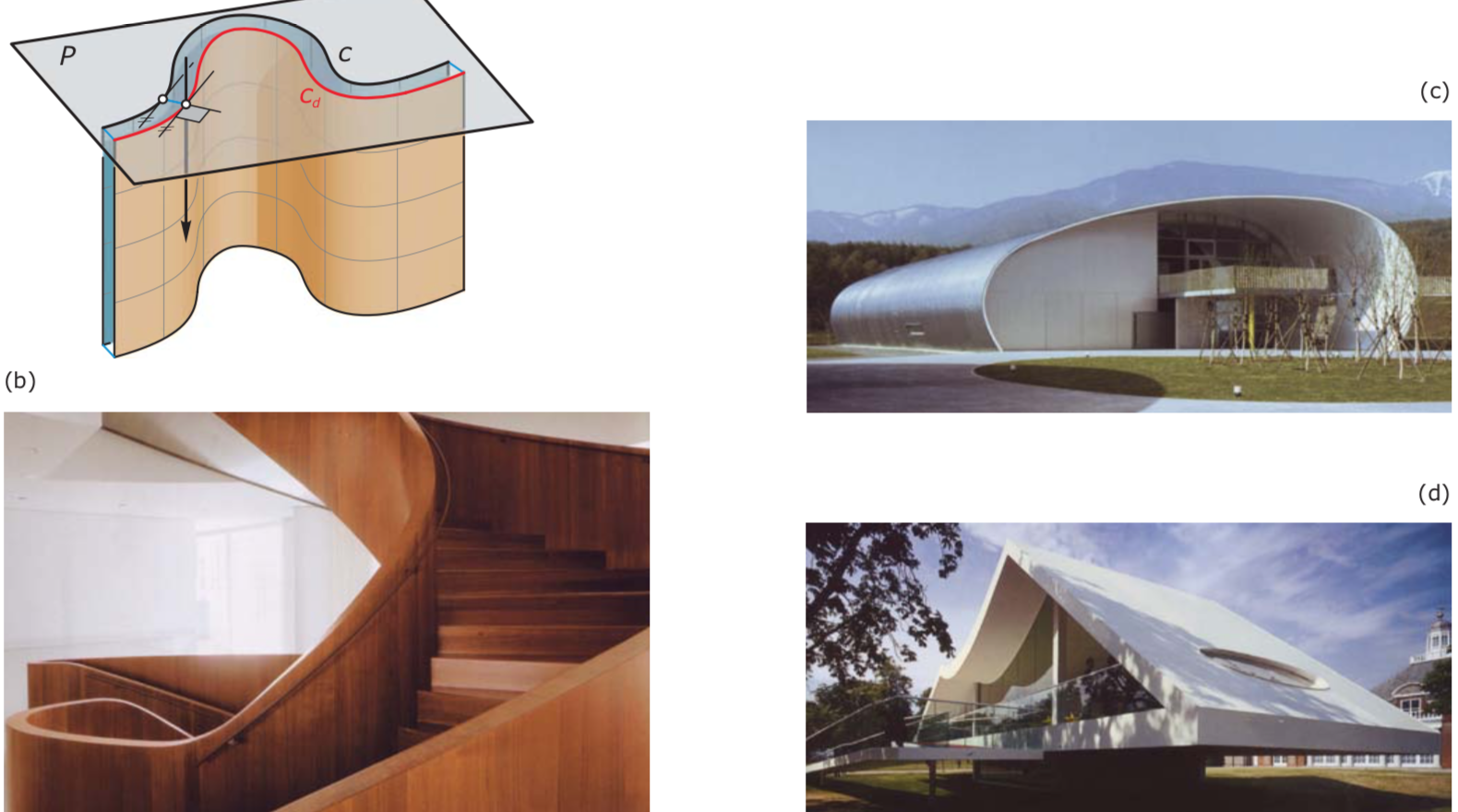
Offsets of polyhedral surfaces.
- The offset surface $S_d$ of a hyperbolic paraboloid S is no longer a hyperbolic paraboloid.
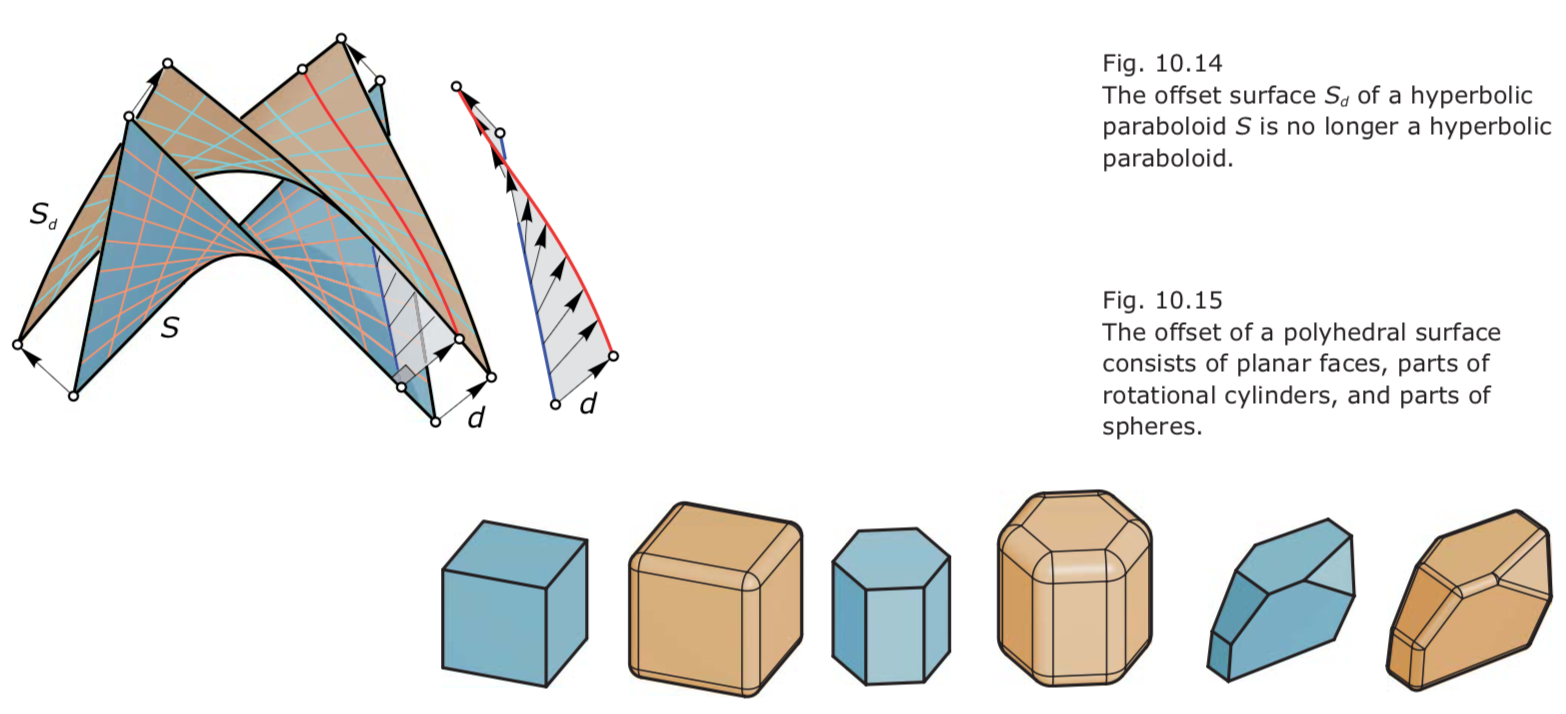
Trimming of offsets 修剪等距
- Thus, for practical applications one sometimes needs to remove these parts of the offset curve.
- By local trimming we remove parts of the offset that overlap because the offset curve intersects the evolute of the original curve.
- Global trimming is necessary to remove parts of the initial offset curve that overlap but result from distinct regions of the original curve.

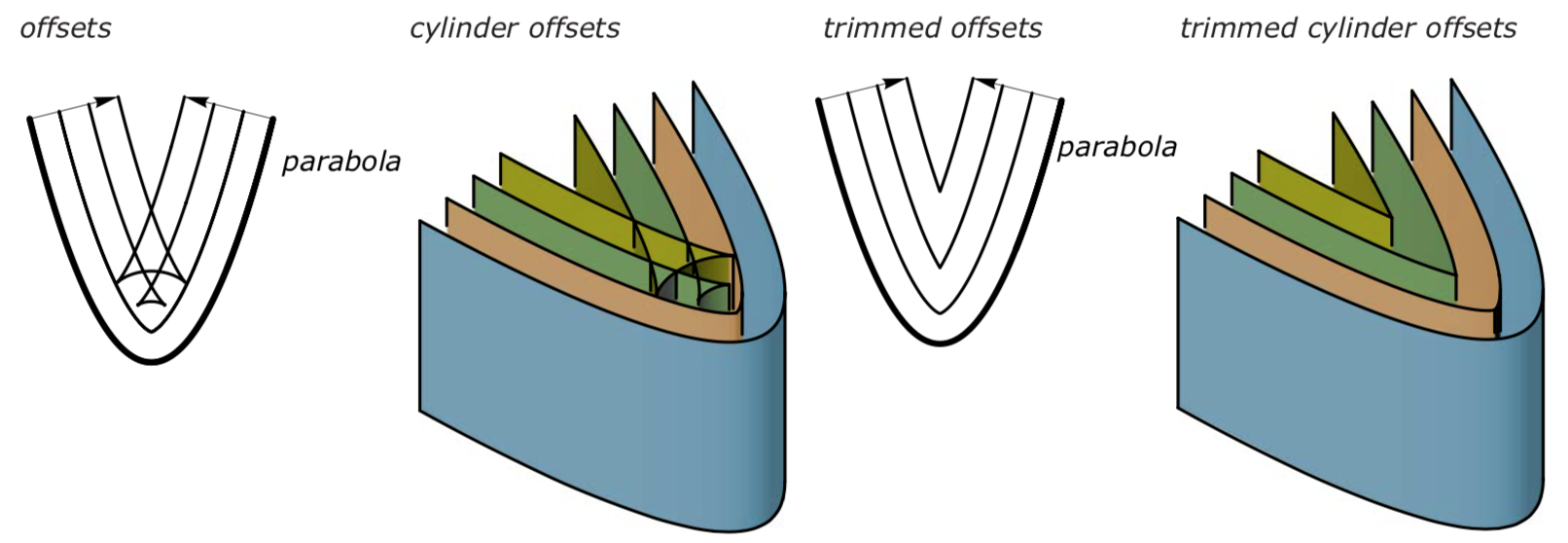
Application of offsets 等距应用
Rolling ball blends
- Such a pipe surface is generated by rolling a ball of radius $r$ “along the edge” such that it always touches both surfaces.

Designing roofs using Offsets
- The geometric shape of a roof is driven by a combination of drainage constraints, the floor plan, and stylistic considerations.

- The main idea is that the offset polygons of the eave polygon (formed by the eaves) are nothing more than the top views of the iso-height contour lines of the roof.
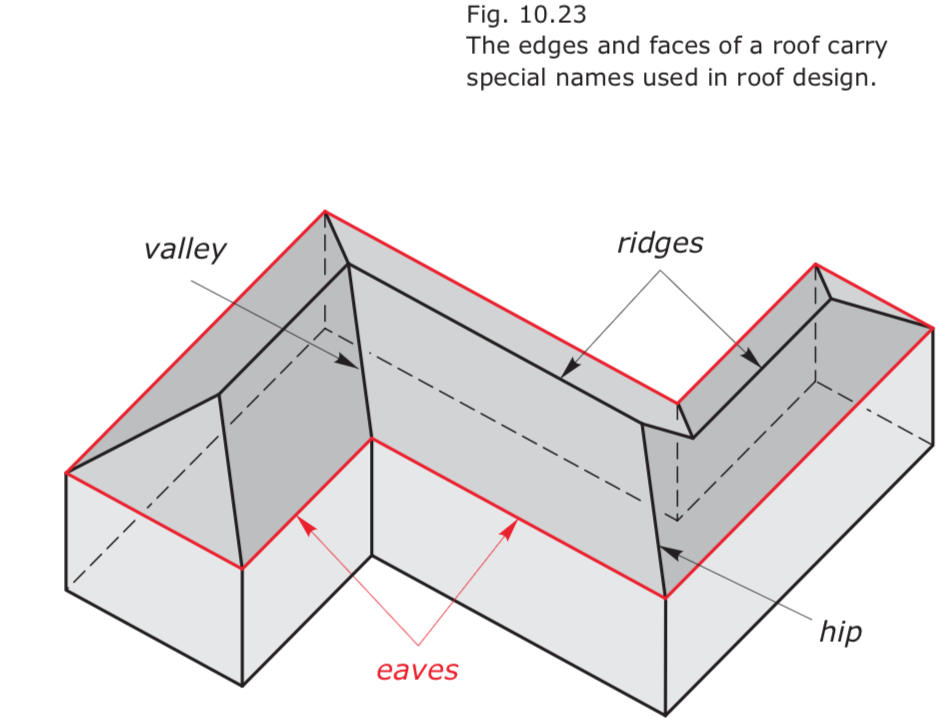
- Using offsets, we find the top views of hips, valleys, and ridges of the roof as follows.

- We can also design roofs of constant slope to smooth eave curves. Then the roof will be formed by a developable surface of constant slope.
